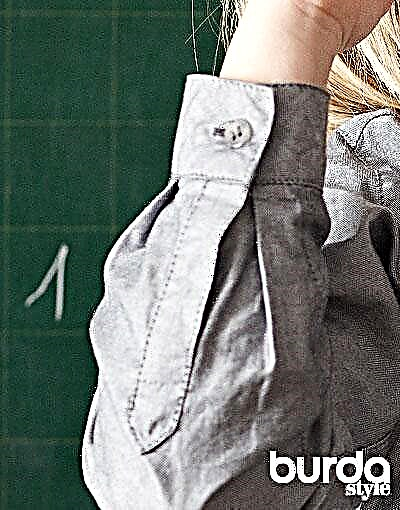Keeping the temperature of the drink on the way to work is much easier if you have a special case. And then tea or coffee in a thermos will stay hot longer, and a cup will not burn your hands.

You will need:
For a thermos cover of 0.5 l:
✩ 8 strips of fabric of different colors for the outside of the cover: 4.5 x 36 cm each
✩ quilt filler: 27 x 27 cm
✩ fabric for the inside of the case: 28 x 30 cm
✩ slanting trim: 2 x 56 cm
✩ fabric for the upper part: 8 x 28 cm
✩ fabric for pens: 12 x 52 cm
✩ fabric for the outer bottom: 8 x 8 cm
✩ filling for the bottom: 8.5 x 8.5 cm
✩ fabric for the inner bottom 9 x 9 cm
✩ slanting trim for the bottom: 2 x 29 cm
✩ threads to match the fabric
✩ pull cord
For a case on a glass of 500 ml:
✩ 5 strips of fabric of different colors: 4.5 x 45 cm
✩ filler: 25 x 40 cm
✩ fabric for the inside of the case: 26 x 42 cm
✩ slanting trim 2 x 58 cm
✩ fabric for the outer bottom: 7 x 7 cm
✩ filling for the bottom: 7.5 x 7.5 cm
✩ fabric for the inner bottom: 8 x 8 cm
✩ slanting trim for the bottom: 2 x 23 cm
✩ threads to match the fabric
Basic rulers for patchwork: what to choose and how to use?
Tools:
✩ wheel cutter
✩ cutting substrate
✩ scissors
✩ iron
✩ sewing machine
✩ needle for hand sewing
Step 1

From fabrics of different colors, cut 8 strips measuring 4.5 x 36 cm.
Step 2

Sew the strips of fabric into a patchwork fabric to an allowance of 7 mm.
Step 3

Iron the seam allowances.
Step 4

Stitch the first and last lane so that you get a “pipe”.
Step 5

The resulting "pipe" is laid out on a mat and cut into 8 "rings" 4.5 cm wide.
Patchwork Tea Party Set
Step 6

On each patchwork “ring”, expand one seam so that when adding the resulting stripes from squares with the same pattern, a “ladder” is obtained.
Step 7

Sew the resulting strips into a patchwork.
Step 8

Cut out the part for the inside of the cover and the filler.
Step 9

Chip off all three layers so that one allowance of 2 cm wide remains along one side cut from the inside of the cover.
Step 10

Sew along all seams or in random order so that the cover piece is tight. Excess fabric, except for allowance on the side cut, cut off.
We sew a basket of flaps
Step 11

Cut out two oblique beaks of 2 x 28 cm and a rectangle for the upper part of 8 x 28 cm.
Step 12

Tighten side sections of the upper part of the cover and stitch at a distance of 7 mm. Tighten the upper section of the upper part of the cover and stitch at a distance of 1.4 cm.
Step 13

For the handles of the cover, cut out two strips of 6 x 52 cm. The handles can be of any length, which will be convenient when using the cover.
Step 14

Fold each handle along in half with the front side inwards and grind long sections to an allowance of 5 mm. To turn out handles, to iron and to stitch on both sides.
Step 15

Along the upper and lower sections of the cover part, pin the oblique beaks with the front side to the front side. Pin the handles at the top at a distance of 3 cm from the side sections, and at the bottom at a distance of 4 cm.
How to sew a patchwork blanket
Step 16

Pin the upper part of the cover with the wrong side to the inside of the cover part. Sew on the inks, pens and the upper part of the cover.
Step 17

Unscrew the upper and lower belts up and down, respectively, with the handles (the handles will be on the other side). Detail of the cover folded in half along the outside with the inside. Perform a longitudinal seam, securing the ends of each inlay.
Step 18

Unscrew the wide allowance of the longitudinal seam on the narrow allowance, tuck it in and sew with hidden stitches.
Step 19

Unscrew the tabs on the inside of the cover, twist the sections of the tabs and sew with hidden stitches along with the handles. Remove cover.
Step 20

Cut a square of 8 x 8 cm for the outer bottom, a filler of 8.5 x 8.5 cm and a square of 9 x 9 cm for the inner bottom.
Original do-it-yourself patchwork plaid
Step 21

Sew a stitch to join the three layers of the bottom.
Step 22

From the resulting part, cut a circle with a diameter of 7 cm.
Step 23

Cut out a slanting inlay measuring 2 x 29 cm.
Step 24

Sew one cut of the tape to the width of the allowance of 7 mm. Unscrew the tie around the bottom cut. Tuck another section of the neckline and sew with hidden stitches.
Step 25

Sew the bottom to the cover manually.
Patchwork: milestones
Step 26

For a case on a cup, perform the same operations as when sewing a case on a bottle: sew 5 strips of 4.5 x 45 cm each into a "pipe" and cut from it 10 "rings" 4.5 cm wide. One seam of each "ring "to spread so that when unfolding the obtained stripes, a pattern in the form of a" ladder "is obtained. To narrow each strip: at one end on both sides, make bevels 5 mm deep and 8 cm high.
Step 27

Sew narrowed stripes into a patchwork cloth, quilted with filler and a cloth for the inside of the cup. At one side cut from the inside of the cover part also leave a 2 cm allowance.
Step 28

Sew an oblique trim to the upper and lower sections. Fold the cover detail in half with the front side inward. Unscrew the ribbons and make a longitudinal seam.
Step 29

Tighten and sew on a wide allowance for the longitudinal seam, and then oblique piping.
Step 30

In the same way, as for the bottle case, carry out the bottom. Its diameter is 6 cm. Sew the bottom to the cover with hidden stitches.
Patchwork: cushioning materials

Tip: if the cover is also insulated with a thermal foil, then its heat-saving properties will increase significantly.
Source and photo: Burda. Patchwork 2/2018



